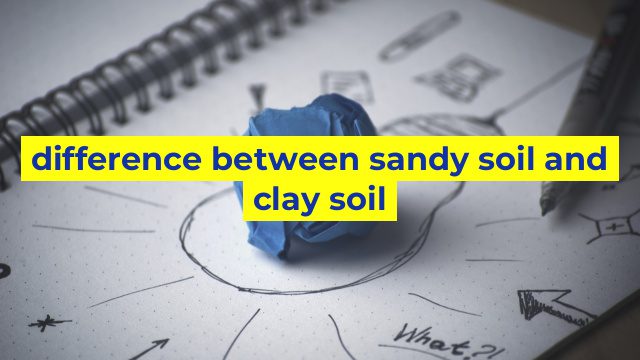Differences Between Sandy Soil and Clay Soil
When it comes to gardening or farming, soil is the foundation of everything. Knowing the characteristics of the soil is crucial as it determines the type of plants that can grow on it. Sandy soil and clay soil are two types of soil that vary significantly in their properties. Understanding the difference between them can help you determine which type of soil you have and what measures you need to take to improve its fertility.
Composition
Sandy soil is light, porous, and drains water easily. It is made up of large particles, such as rock fragments, sand, and small stones. The gaps between these particles allow water, air, and nutrients to flow through the soil easily, which means that it dries out very quickly. Sandy soils contain low amounts of nutrients and organic matter.
In contrast, clay soil is heavy, dense, and compacts easily. It is composed of smaller particles, such as silt and clay, which are tightly packed together. Clay soils have a poor drainage system, hold onto water longer, and tend to be waterlogged. Compared to sandy soils, clay soils are rich in nutrients, such as iron, calcium, and potassium.
Plant Growth
Sandy soils are better suited for growing drought-tolerant plants, such as cacti, succulents, and vegetables like sweet potatoes, carrots, and beets. The loose and porous soil structure of sandy soil allows air to easily reach plant roots, which is needed for optimal growth.
On the other hand, clay soils are better suited for growing plants that require moisture, such as ferns, hostas, and shrubs like hydrangeas and azaleas. The dense soil structure of clay soil helps retain nutrients and water, which can be beneficial for plant roots. However, too much moisture retention can cause root rot and other fungal diseases in some plants.
Improving Soil Quality
While both sandy and clay soils have their advantages and disadvantages, they can both be improved through soil amendments. For sandy soils, adding compost or organic matter can help retain moisture and nutrients. For clay soils, adding sand or perlite can improve drainage and prevent soil compaction.
In conclusion, sandy and clay soils differ in their composition, properties, and suitability for growing different types of plants. Knowing the type of soil you have and understanding its characteristics can help you make informed decisions about what to plant and how to improve its quality. With the right care and attention, you can turn any type of soil into a fertile foundation for healthy and thriving plants.
Table difference between sandy soil and clay soil
| Property | Sandy Soil | Clay Soil |
|---|---|---|
| Texture | Coarse-grained and loose | Fine-grained and sticky |
| Drainage | Good drainage due to large pore spaces | Poor drainage due to small pore spaces |
| Water Retention | Low water retention capacity | High water retention capacity |
| Nutrient Retention | Low nutrient retention capacity | High nutrient retention capacity |
| Plant Growth | Good for plant growth with proper irrigation and fertilization | Good for plant growth with regular irrigation and adequate drainage |

